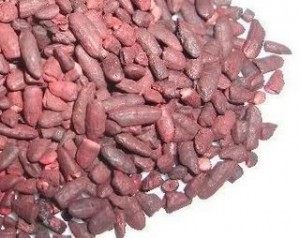 As those of you who read my blog are aware, I am not a big fan of statins. The first reason is that cholesterol is not really the problem. The second is that statins depress the body’s own anti-inflammatory compound CoQ10. But recent research shows that, against our logical assumptions, Vitamin D levels may rise when statins are taken.
As those of you who read my blog are aware, I am not a big fan of statins. The first reason is that cholesterol is not really the problem. The second is that statins depress the body’s own anti-inflammatory compound CoQ10. But recent research shows that, against our logical assumptions, Vitamin D levels may rise when statins are taken.
Cholesterol is good? Yes. Cholesterol is the building block of hormones, and it is the body’s own bandage for inflamed arteries. When the inflammation is high, cholesterol rises and if it isn’t enough to lower you get cardiovascular disease. It doesn’t get rid of the inflammation to remove the body’s bandage, you need to look at diet and stress and other causes of inflammation. Besides if you block cholesterol with statins, you block the body’s formation of CoQ10 which is our natural antioxidant. And that can cause a painful disease called rhabdomyolysis where the muscles ache and cramp.
But isn’t it helpful to prevent heart disease? Sort of. You are less likely to get a second heart attack, but not a first one. You may be less likely to die from a heart attack but no less likely to die from other causes within a normal study period. And it probably isn’t because it reduces cholesterol, but because it is anti-inflammatory (replacing your body’s own anti-inflammatory coenzyme with its own effect).
How about Red Yeast Rice? Red Yeast Rice is a kind of statin, and is the source for lovastatin which it contains. Red Yeast Rice is somewhat less dangerous- it spreads itself out among liver detoxification pathways without clogging a few important pathways. And the dosage is lower, which is common in a whole herb and does not impair its action. But it still reduces CoQ10, and adds some liver taxation I use it rarely.
The information about Vitamin D and statins is a surprise. Vitamin D and cholesterol have the same precursor, and those of us in the natural medicine field assumed that statins would reduce absorption of Vitamin D if you took a medication that reduced the precursor. In a Turkish cardiology study, 91 patients with high blood lipids were tested before and after an eight week course of Rosuvastatin (Crestor). Their blood levels of Vitamin D (25 hydroxy D) went from 14 to 36 on average, and a number of other measures of Vitamin D improved. Why? Well we don’t know, but it could have to do with the breakdown products of the drug and the precursor fitting into the receptors.
Do I recommend asking your doctor for Crestor to build Vitamin D? No. There are several formulations of high value D3 on the market, from drops to fast-dissolving dry pills. They go from a tiny pill with 5000 iu to capsules of 50,000 iu. If one doesn’t work well to increase your serum (25 Hydroxy D) Vitamin D levels to a level of 50, look at others. You may build up your dose to a higher level. And you should consider supplementing your D3 vitamins with even a little midday sun exposure without sunscreen because sunlight energy can’t be reduced to one isolated vitamin. (Your body will not make too much.)
If all else fails, then I would try taking the Vitamin D with some Red Yeast Rice for a period of up to two months while you load Vitamin D. Red Yeast Rice has not been studied like the Rosuvastatin so you are experimenting on yourself but chances are good that it will work. Add extra Co-enzyme Q10 to protect your liver and your muscles. And when you get your levels up, stop the Red Yeast Rice.
